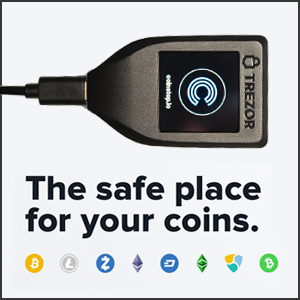
Figuratively, a vote is the guarantee of representation and future detonator of change. Collectively, the manifestation of citizens’ needs and ideologies.
But, in a practical sense, a vote is nothing more than an untraceable piece of paper put in the hands of a third-party: a government entity.
When you cast a vote into the ballot, you can never be 100% sure that it reaches your selected candidate.
Recounts were created to provide “more certainty” in election results. But, if the people don’t trust results on the first round, how would a second round organized and validated by the exact same group of people be any more trustworthy?
Instances of distrust not a rare occurrence. From constantly surveyed countries such as the U.S. to underdeveloped nations around the globe, people are losing trust in their government institutions.
The major issue with voting systems is the need for people to place a high level of trust in an institution. Institutions were used to reduce uncertainties, and they worked, in their time. But people are questioning more and more. What safeguards are there to prevent errors or even deliberate wrongdoing, not just once, but potentially repeatedly?
University of Michigan professor J. Alex Halderman, has made a career studying electronic voting security. Through his research, he has transformed the notion of election fraud from a theoretical concept into a tangible reality. He was certain U.S. Polling stations were vulnerable to attackers, so with his team, he stated:
“We’ve created attacks that can spread from machine to machine like a computer virus and silently change election outcomes. And in every single case, we found ways for attackers to sabotage machines and to steal votes. These capabilities are certainly within reach for America’s enemies.”
In the 2019 Hacker conference DEFCON, a group was able to hack polling stations currently in use in just two minutes without specialized equipment. Two minutes was all that was needed to alter the state’s future. And this is just the reality in a first world country.
Zimbabwe, Venezuela, Sierra Leone… The list of irregularities in elections are constant occurrences. This calls into the integrity of paper ballots.
Besides of the lack of security due to corruption and human error, paper ballots have other downsides. There is the inconvenience of going to voting stations, piling on to the list of the many circumstances that contribute to the decreasing voting turnout. Also, the printing and transportation of materials can add unnecessary costs. According to Annika Jobsen in her TedXZurich Talk in 2016, the 2012 French Presidential election saw a 46% increase in election costs. Add on to that paying someone to carry out the tally.
Paper-based voting is not necessarily inaccurate in its entirety. However, it leaves open several blind spots in which changes can be inflicted. Elections are a delicate topic in which a small margins can change everything.
These uncertainties make us skeptic. This questioning is necessary to evolve. It’s what’s inspired the creation of banks and online platforms in the first place. Now, these uncertainties must be taken from ideas to actions.
If elections are handled on a blockchain, there wouldn’t been one person or institution counting the votes. It would be a collection of thousands of computers making sure that each entry is registered correctly. Isn’t that amazing?
In her TedTalk, Annika envisions the future of voting. She proposes an app-based voting system, where you register with an ID to confirm your identity and get results in a matter of minutes. The publicly accessible ledger would let people access the results. Votes would be instantaneously added on to the blockchain, with the tally being updated in real-time and verified by all the computers with the same copy. It’s unalterable.
Software developer Lazslo Fazekas created a proof of concept for a blockchain voting system using “Zero-Knowledge Proofs”.
In a blockchain context, zero-knowledge proofs allow you to demonstrate that you have specific information, like a valid vote in an election, without showing your choice or revealing your identity.
In this TedTalk, David Bismark (an expert in e-voting) proposes a hybrid system, that includes both paper and electronic voting.
Most aspects of his proposal solve several issues by covering possible security breaches. However, it’s centralized (alterable). But, here’s a little modification of how this system can function by saving the information on the blockchain instead of a centralized database:
- The form consists of two parts, with the left containing the list of candidates and the right side showing an encrypted value in the form of a 2D barcode and a checklist.
- Each voter receives a unique voting form with a list of candidates presented in a different order for each ballot.
- Voters enter the voting room to cast their votes, marking their choices in secret.
- Voters remove the portion of the ballot containing the list of candidates through the tearaway tab, and destroy this list to ensure the secrecy of their choices.
- The polling station authority scans the encrypted vote and is then securely stored on a hashed block, ensuring its immutability and transparency.
- The results are displayed on a website for everyone to see, with real-time updates.
- Voters take home the half of the vote as a receipt they can scan and compare with their original choices to ensure the accuracy of their vote.
- Auditors have the ability to download electoral data from the blockchain and independently verify the results, ensuring the integrity of the election process.
As seen below, two individuals casted a vote for the exact same candidate. Yet, the checked list will look completely different.
What about secrecy?
Of course, votes need to continue being anonymous.
To guarantee no person’s identity is connected to their vote and prevent possible identity theft and double voters, the blockchain can encrypt a person’s identification.
As we have seen before, blockchain information is hashed. This double-edged sword maintains secrecy without compromising the security of elections.
Public participation
Besides added security and trustworthiness, technological tools can lead to a more participatory democracy. These platforms support popular voting to be not only in elections every few years.
When the government is on the planning stages of new projects, they can insert remote voting access to citizens living near or associated to the impacted areas.
Digital mechanisms open up dialogue spaces that allow for better decision-making, create platforms for sharing information, and break down communication barriers. With constant validation and interaction with citizens, governments and international organizations can ensure public approval.
Think of a dollar you paid in taxes. You probably pay a lot more than that, but let’s focus on that one little dollar. You may get some sleep at might thinking it probably went towards a hospital bed in your city or to filling up potholes. Or is it financing a new yacht for a politician’s extravagant lifestyle or attempting to bribe a judge? Truth is you’ll never know.
Unless…
Yes, you guessed it, governments implement blockchain.
As we discussed blockchain keeps an unalterable record of transactions, and this opens up all the possibilities.
The epicenter for corrupt practices in the government is procurement: “the process of governments acquiring goods, services and works”.
Prucurement constitutes a substantial share of public budgets, comprising 29% of the total general government spending. It comes as no surprise that the OECD approximates that corruption might be responsible for the loss of 10% to 30% of investments in publicly funded construction projects.
Current transparency records exist, but they present several issues that obstruct their purpose:
- Put forward by the party that’s being audited: BIAS.
- Not interactive nor user-friendly.
- No mechanisms for receiving reports or feedback.
- Lack sufficient detail.
- Static or incomplete information.
- Limited integration.
- Outdated records.
A government transparency based on blockchain technology has the power to turn around most of these disadvantages!
- Decentralization: The public consensus system reduces the potential for bias or manipulation since no single party has control over the data.
- Tamper-proof ledger of transactions and information: Once data is added to the blockchain, it cannot be altered or deleted without the consensus of the network, reducing the risk of data manipulation.
- Real-time Updates: Blockchain transactions are processed immediately, providing up-to-date and accurate records.
- Smart Contracts: SC’s oprate through programmed If/Then situations, happening automatically once requisites are completed. They can trigger audits when certain criteria are met or x amount or reports are made on a specific transaction.
- User-Friendly Interface: A friendly and simple design makes it easier for the public to access and understand the data, therefore incentivizing feedback.
- Secure Data Storage: Blockchain’s strong encryption minimizes the risk of data breaches and ensures the confidentiality of sensitive information.
An accessible and open record of government spending and receiving, free from biased intermediaries and immune to changes or suppression of information. Blockchain has the potential to evolve into the ultimate transparency mechanism, capable of transforming the lives and circumstances of citizens on a global scale.
As we stand on the edge of a new era in governance, blockchain technology emerges as the ultimate weapon to combat corruption and improve democracy. Especially considering its direct effects on society’s wellbeing, the sphere of politics and governance must not rely on outdated and inefficient systems while other areas move forward. The enduring issues of corruption, lack of transparency, and voter distrust in many countries call for innovative solutions and an action plan to make them come true.
Blockchain, with it’s decentralized, immutable, and secure records, presents a game-changing opportunity. It offers the priviledge to leave behind the current need for trust and intermediaries present in traditional systems, where there is an abundance of doubts and uncertainties.
There are exciting possibilities on the horizon. Blockchain’s architecture ensures transparency, security, and trustworthiness in the political system. It has the capability to wield citizens more power over their communities and give governments the opportunity to drive a positive transformation in society
A factor that’s need to be taken into account is whether governments are willing to embrace a technology that has the authority to hold them and their actions accountable. It can be difficult to bypass this, but being backed by international organizations, public policies and pioneer nations can help put a food forward in the long road to a true democracy.
Blockchain tech is still an evolving technology in a nonstop process of exploration and renovation through ongoing research and development. As we move forward, the potential applications of blockchain in elections and governance remain a subject of exploration.
Blockchain represents the dawn of a new age, offering the promise of a more open, accountable, and participatory political landscape. It has the potential to revolutionize the way we conduct elections, manage public funds, and make critical decisions.
It’s time to stop searching through enciclopedias and sending messenger pigeons. We have more access and information than ever in history. Let’s put it to good use and harness this groundbreaking tool to build a brighter future for democracy and governance.










